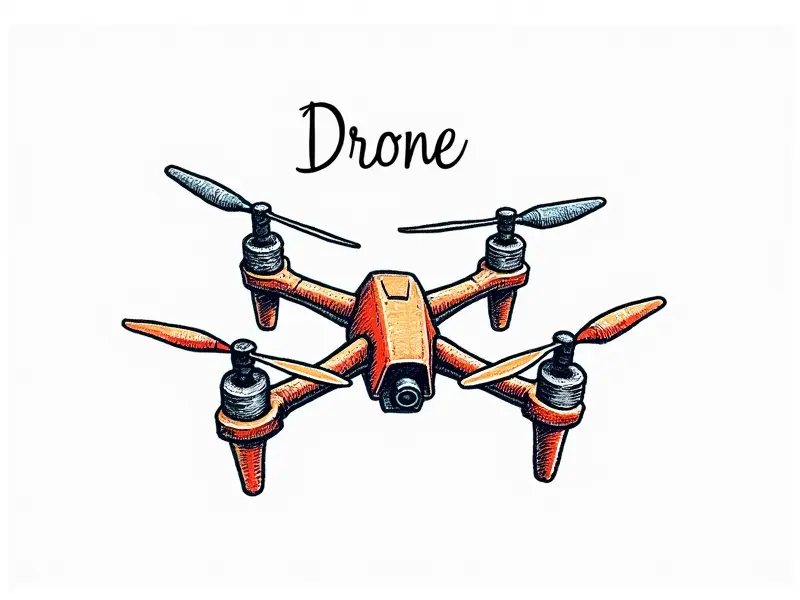What’s FPV transmitter range?

Maximizing Your FPV Drone Range
When it comes to flying your drone in First Person View (FPV), the range of your transmitter is crucial. A longer range means you can explore more terrain and capture stunning aerial footage without worrying about signal loss or interference. This article will guide you through various strategies and tips to maximize your FPV drone's transmission distance.
Boosting FPV Transmitter Distance Effortlessly
There are several simple yet effective ways to boost the range of your FPV transmitter without requiring extensive modifications:
- Choose the Right Frequency Band: Opt for a frequency band with less interference, such as 5.8 GHz over 900 MHz.
- Select High-Quality Components: Invest in top-tier transmitters and receivers that offer better range and reliability.
- Avoid Obstacles: Keep your drone away from buildings, trees, or other objects that can obstruct the signal.
Secrets to Extend FPV Drone Signal Range
To extend your FPV drone's range further, consider these advanced techniques:
- Upgrade Your Antennas: Replace stock antennas with high-gain directional or omnidirectional models.
- Optimize Power Settings: Increase the power output of your transmitter within legal limits to enhance signal strength.
- Use Diversity Receivers: Employ receivers that utilize multiple antenna inputs for improved stability and range.
Achieving Maximum FPV Transmitter Reach
To achieve the maximum possible reach with your FPV transmitter, follow these steps:
- Install High-Quality Cables: Use low-loss coaxial cables to minimize signal degradation.
- Position Antennas Properly: Ensure that both the drone and ground station antennas are aligned for optimal performance.
- Monitor Signal Quality: Regularly check your video feed quality to identify potential issues early on.
Top Strategies for Long-Range FPV Flying
Here are some top strategies that can significantly increase the range of your FPV setup:
- Leverage RF Amplifiers: Use RF amplifiers to boost signal strength without exceeding legal power limits.
- Employ Antenna Arrays: Utilize multiple antennas in an array configuration for better coverage and range.
- Optimize Flight Path: Plan your flight routes to avoid areas with high interference or obstacles.
Understanding FPV Radio Frequency Limits
The Federal Communications Commission (FCC) regulates the use of radio frequencies for various devices, including FPV transmitters. It's essential to understand these regulations:
- FCC Part 15 Rules: Adhere strictly to FCC rules regarding power output and frequency usage.
- Interference Considerations: Be aware of potential interference from other devices operating on the same or nearby frequencies.
Enhancing FPV Video Transmission Distance
To enhance your FPV video transmission distance, focus on these key areas:
- Select High-Quality Transmitters and Receivers: Invest in reliable equipment that offers superior range.
- Optimize Antenna Placement: Ensure proper alignment between the drone's transmitter and ground station receiver antennas.
- Reduce Signal Loss: Use high-quality cables with minimal signal loss to maintain video quality over long distances.
Common Issues with FPV Transmitter Range
Several common issues can affect the range of your FPV transmitter:
- Interference from Other Devices: Nearby electronic devices or other drones using similar frequencies can cause interference.
- Signal Obstruction: Physical barriers such as buildings, trees, and hills can block the signal path.
- Power Output Limitations: Legal restrictions on transmitter power output may limit your range.
Optimal Settings for Long-Range FPV
To achieve optimal settings for long-range FPV flying, consider these recommendations:
- Adjust Power Output: Increase the power setting within legal limits to enhance signal strength.
- Select Appropriate Frequency Band: Choose a frequency band with less interference and better propagation characteristics.
- Optimize Antenna Configuration: Use high-gain antennas and ensure proper alignment for maximum range.
Enhance FPV Range with Antenna Upgrades
Upgrading your antennas is one of the most effective ways to enhance your FPV range. Consider these options:
- High-Gain Directional Antennas: Use directional antennas for focused signal transmission and reception.
- Omnidirectional Antennas: Opt for omnidirectional antennas to cover a wider area with consistent signal strength.
- Diversity Antenna Systems: Implement diversity antenna systems to improve stability and range.
Common Causes of Short FPV Range
The following factors can contribute to short-range issues in your FPV setup:
- Inadequate Power Output: Insufficient power from the transmitter limits signal strength.
- Poor Antenna Alignment: Misaligned antennas between the drone and ground station reduce range.
- Signal Interference: Nearby electronic devices or other drones using similar frequencies can cause interference.
Conclusion
Maximizing your FPV transmitter range is essential for enjoying long-distance flights with clear video transmission. By selecting the right frequency band, upgrading to high-quality components, and optimizing antenna configurations, you can significantly enhance your drone's operational distance. Remember to adhere to FCC regulations and monitor signal quality regularly to ensure optimal performance.

